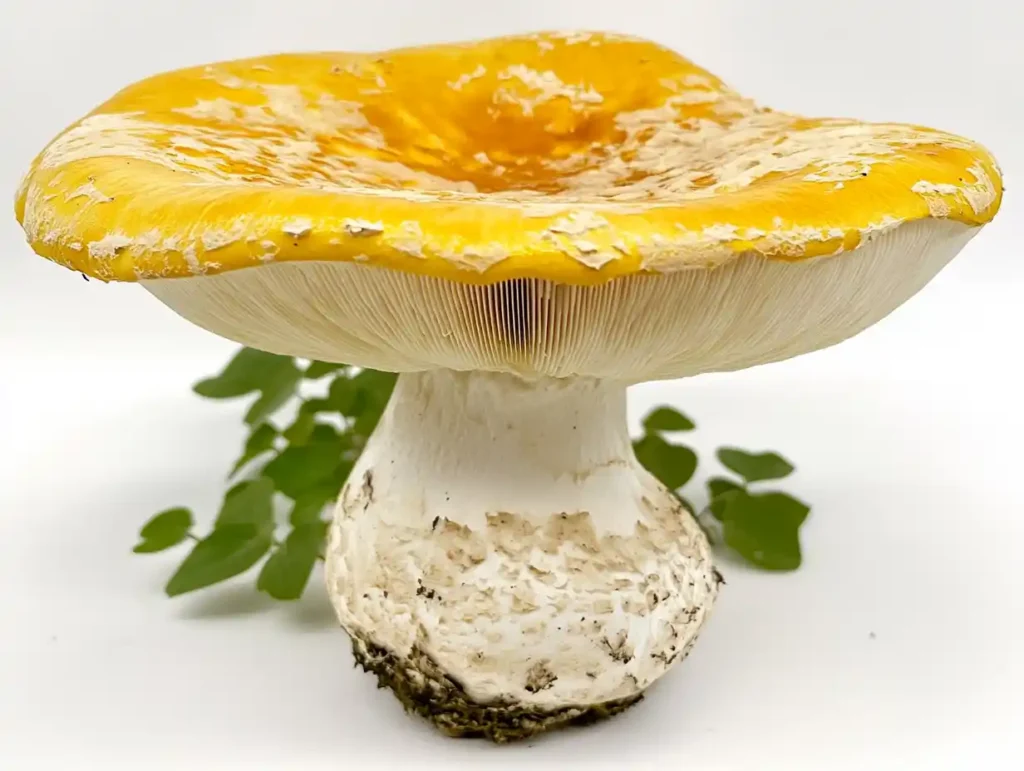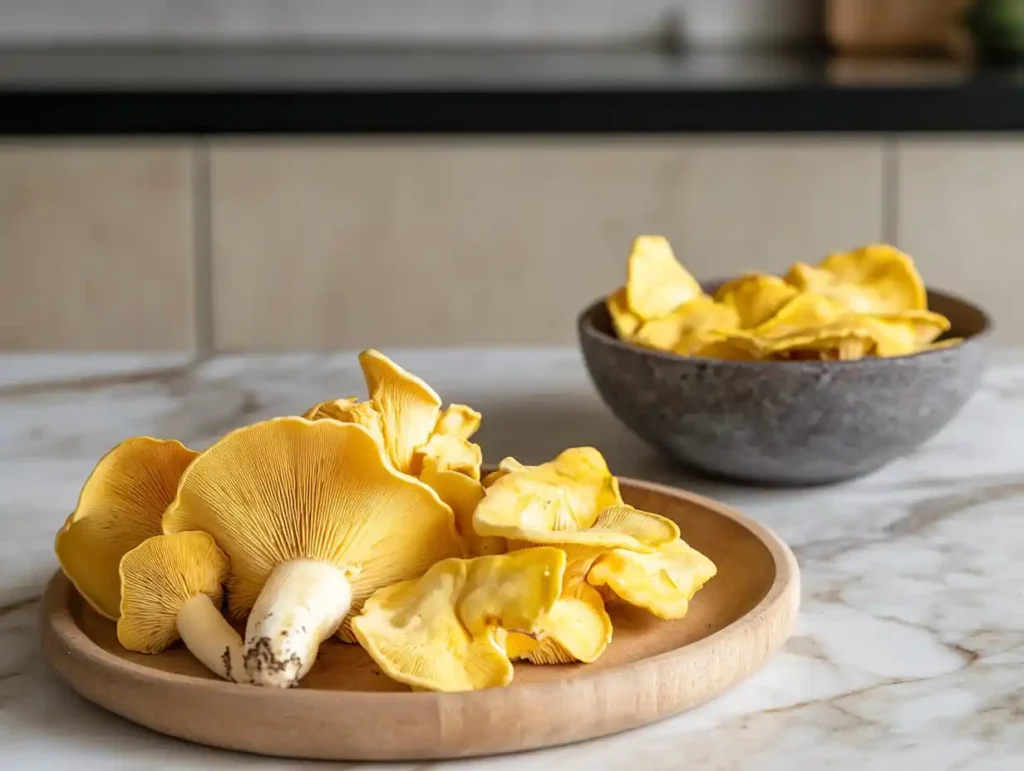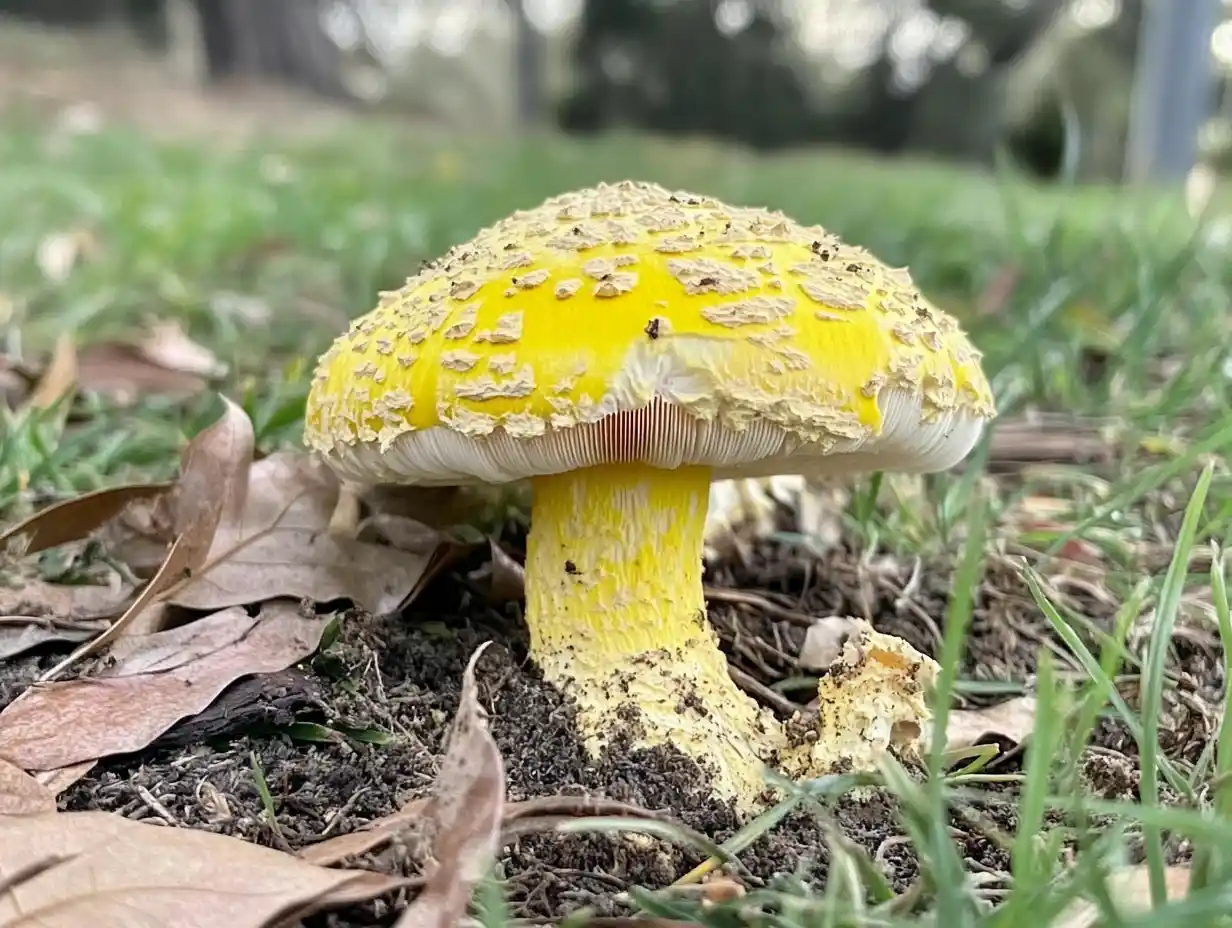Introduction
The Yellow Stainer Mushroom is a fascinating yet dangerous fungus that often confuses mushroom foragers due to its similarity to edible mushrooms. Its scientific name, Agaricus xanthodermus, hints at its defining feature—a yellow stain that appears when the mushroom is bruised or cut. While it may look harmless, this mushroom is toxic and should never be consumed.
Misidentifying the Yellow Stainer can lead to serious health problems, including vomiting, nausea, and stomach cramps. Many foragers mistake it for edible species like the Field Mushroom (Agaricus campestris), making it even more important to know how to identify and avoid it.
This article will explain how to recognize the Yellow Stainer, discuss its toxicity, and offer safety tips to prevent accidental consumption. By the end, you’ll have the knowledge you need to stay safe while foraging.
What is the Yellow Stainer Mushroom?
The Yellow Stainer Mushroom (Agaricus xanthodermus) is a common species found in lawns, gardens, and woodlands. It often grows in clusters, making it visually appealing but potentially dangerous to unsuspecting foragers.
Appearance and Key Features

This mushroom has a smooth white cap that can range from flat to slightly domed. When bruised or cut, it displays a yellow stain, especially near the base of the stem. The gills underneath are pale pink when young and darken to chocolate brown as they mature. It also emits a chemical-like odor, often compared to phenol or ink, which helps distinguish it from edible mushrooms.
Habitat and Growth Conditions
The Yellow Stainer thrives in fertile soils, often appearing in lawns, parks, and forest edges. It prefers warm climates and typically grows during late summer and fall, making it a common sight in urban gardens and wild habitats.
Is the Yellow Stainer Mushroom Poisonous?
Yes, the Yellow Stainer Mushroom is toxic and should never be eaten. Its resemblance to edible varieties like the Field Mushroom has led to many cases of accidental poisoning. Even though cooking does not destroy its toxins, some people mistakenly believe it can become safe to eat when cooked.
Symptoms of Poisoning
Consuming the Yellow Stainer can cause digestive distress within 30 minutes to 2 hours after ingestion. Common symptoms include nausea, vomiting, diarrhea, and severe stomach cramps. While the poisoning is rarely fatal, it can cause extreme discomfort and may require medical treatment if symptoms become severe.
Toxins Present in Yellow Stainer Mushrooms
The toxin phenol, which is responsible for the mushroom’s chemical odor, irritates the digestive system when ingested. It triggers the nausea and cramping associated with poisoning. People with sensitive stomachs may experience more severe reactions, even after consuming small amounts.
How to Identify the Yellow Stainer Mushroom?
Proper identification of the Yellow Stainer Mushroom is essential to avoid accidental poisoning. It closely resembles edible mushrooms, so paying attention to key features can help you spot the differences.
Physical Markers and Appearance
The Yellow Stainer has a white cap that is usually smooth and slightly convex. It ranges between 5–15 cm in diameter, and the edges may curl downward in younger mushrooms. When the mushroom is bruised or cut, the yellow stain appears quickly, especially around the base of the stem. This feature is the most reliable indicator of its identity.
Its gills start as pale pink but gradually turn dark brown as the mushroom matures. The stem is sturdy with a bulbous base, and a ring-like skirt often remains attached near the top. Another telltale sign is its unpleasant odor, which smells like ink, phenol, or even disinfectant products.
Similar Edible Look-Alikes
The Field Mushroom (Agaricus campestris) and other white-capped edible mushrooms are often mistaken for the Yellow Stainer. However, edible varieties lack the yellow bruising reaction and emit a mild, earthy smell rather than a chemical odor. Carefully inspecting these features reduces the risk of misidentification.
Testing for Safety
To confirm identification, gently scratch the surface or cut the stem to observe any yellow discoloration. Additionally, smell the mushroom closely—an unpleasant odor should raise immediate red flags. If uncertainty remains, consult an expert mycologist or use a mushroom identification app for added safety.
What to Do if You Consume a Yellow Stainer Mushroom?
Accidentally eating a Yellow Stainer Mushroom can cause immediate discomfort and requires quick action to reduce potential health risks. While the toxin in this mushroom is rarely fatal, it can lead to severe gastrointestinal distress and dehydration if left untreated.
Immediate First-Aid Steps
If you suspect that you or someone else has eaten a Yellow Stainer Mushroom, follow these steps right away. Stop eating immediately and spit out any remaining pieces of the mushroom to avoid further absorption of toxins. Rinse your mouth thoroughly with water to clear any residue. Drink plenty of water to stay hydrated, especially if vomiting or diarrhea starts. Avoid consuming alcohol or milk, as these may intensify toxin absorption.
Seek Medical Help Quickly
Contact poison control or emergency medical services as soon as symptoms appear. Be prepared to describe the mushroom, including where it was found, its appearance, and any changes observed when it was cut or bruised. If possible, bring a sample of the mushroom to the hospital for identification. This can help medical professionals provide the most effective treatment.
Treatment for Mushroom Poisoning
Doctors may administer activated charcoal to absorb any toxins remaining in the stomach. In severe cases, intravenous fluids may be given to prevent dehydration caused by vomiting or diarrhea. Depending on the severity, patients may require observation or hospitalization until the symptoms subside.
Safety Tips for Mushroom Foraging

Foraging for mushrooms can be a fun and rewarding activity, but it also comes with risks, especially when dealing with look-alike species like the Yellow Stainer Mushroom. Following safety guidelines ensures that you can enjoy mushroom hunting without health hazards.
Always Double-Check Identification
Never eat a mushroom unless you are 100% certain it is safe. Examine key features such as color changes when bruised, gill structure, and odor. Use a field guide or a mushroom identification app to cross-check details. For beginners, it’s wise to avoid mushrooms with white caps and yellow stains, as these are often toxic varieties.
Consult Experts
If you’re unsure about a mushroom, seek advice from a mycologist or join a local mushroom foraging group. Attending workshops or guided foraging tours can also help build confidence and improve your identification skills. Experts can verify whether your finds are safe to eat or should be discarded.
Carry the Right Tools
Bring a basket instead of plastic bags to allow mushrooms to breathe and stay fresh. Use a sharp knife for clean cuts and a brush to remove dirt. Always carry gloves to avoid direct contact with potentially toxic mushrooms and keep a notebook for recording observations about location and growth patterns.
Stay Away from High-Risk Areas
Avoid collecting mushrooms near roadsides, industrial areas, or heavily polluted locations. Mushrooms can absorb toxins from their environment, making even edible varieties unsafe. Always forage in clean forests or designated mushroom-picking zones to reduce risk.
When in Doubt, Throw It Out
If a mushroom shows unusual features or doesn’t match descriptions of edible types, it’s best to discard it. It’s better to miss out on a meal than to risk poisoning from an unidentified species.
FAQs: Is the Yellow Stainer Mushroom Poisonous?
Can cooking make Yellow Stainer mushrooms safe to eat?
No, cooking does not neutralize the toxins in Yellow Stainer mushrooms. The harmful compounds remain active, even after exposure to high temperatures. Eating this mushroom, whether raw or cooked, can still cause digestive distress and poisoning symptoms.
How quickly do symptoms appear after eating a Yellow Stainer mushroom?
Symptoms typically appear within 30 minutes to 2 hours after consumption. The most common signs include nausea, stomach cramps, diarrhea, and vomiting. These symptoms can last for several hours but are rarely fatal if treated promptly.
Are Yellow Stainer mushrooms deadly?
While the Yellow Stainer Mushroom is not usually deadly, it can cause severe discomfort and dehydration. People with weakened immune systems or underlying health conditions may experience more serious reactions and should seek medical attention immediately.
What should I do if my pet eats a Yellow Stainer mushroom?
If a pet consumes a Yellow Stainer mushroom, contact a veterinarian immediately. Symptoms in pets, such as vomiting, lethargy, and diarrhea, can occur quickly. Bring a sample of the mushroom to the vet to assist with identification and treatment.
How can I safely remove Yellow Stainer mushrooms from my yard?
Wear gloves and carefully remove the mushrooms by digging out the base to ensure no spores remain. Dispose of them in sealed bags to prevent regrowth and keep pets and children away from areas where mushrooms are commonly found. Regularly mow your lawn and improve drainage to reduce the chances of mushrooms reappearing.
Are there any edible mushrooms that look like Yellow Stainers?
Yes, the Field Mushroom (Agaricus campestris) is a popular edible species that closely resembles the Yellow Stainer. However, Field Mushrooms lack the yellow staining reaction and have a mild, pleasant odor, unlike the chemical smell of Yellow Stainers. Always perform identification tests and consult an expert if you’re uncertain.
Conclusion
The Yellow Stainer Mushroom (Agaricus xanthodermus) may look harmless, but it is poisonous and poses a serious health risk if consumed. Its yellow bruising, chemical odor, and similarity to edible mushrooms make it one of the most frequently misidentified species. Knowing how to recognize it and understanding its toxic effects can help prevent accidental poisoning.
While the Yellow Stainer Mushroom is not usually deadly, it can cause severe digestive issues that require prompt medical attention. Foragers must always follow safe identification practices, rely on expert verification, and when in doubt, discard suspicious mushrooms.
For those who enjoy mushrooms but prefer safety, choosing store-bought varieties or growing cultivated mushrooms at home provides a reliable and risk-free alternative. Whether you’re a foraging enthusiast or just curious about mushrooms, safety and knowledge are your best tools to enjoy these fungi without worry.
Learn More About Edible and Poisonous Foods: Curious about other edible mushrooms? Check out our guide on Is a Yellow Mushroom Edible?. You might also enjoy exploring What Herbs Go Best with Spinach? or discover Why Is My Spinach Pesto Bitter?.

